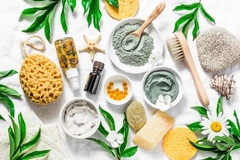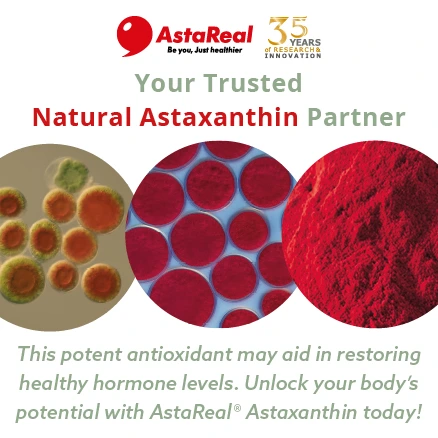Human-derived cosmetics: “Wild West” between innovation and regulation
Key takeaways
- Dermatologists see promise in human-derived skin care but warn it remains unstable without strong regulation.
- Clinical research shows measurable improvements in hydration, pigmentation, and wrinkles, but formulation is crucial for efficacy.
- Health Canada says manufacturers are not required to disclose the origin of the human-derived ingredients.
A growing wave of cosmetics contain human-derived ingredients, but regulators and dermatologists warn that science and safety are not keeping pace.
Exosomes, extracellular vesicles, or cell-conditioned media are microscopic messengers released by human cells. They contain proteins, lipids, and genetic material. In cosmetics, they are marketed as next-generation anti-aging actives said to boost cell renewal and collagen production.
Personal Care Insights speaks with a US-based board-certified dermatologist and a representative from the Canadian government’s Department of Health (Health Canada) about the tension between the innovation, regulation, and consumer trust of human-derived ingredients in cosmetics.
“The newest technology to enter the market is exosomes… Right now, there is little FDA regulation over exosome products. While there is huge potential, there are also huge unknowns,” dermatologist Joshua Zeichner, director of cosmetic and clinical research in Dermatology at Mount Sinai Hospital, US, tells us.
Products containing human-derived ingredients boast claims that make legally classifying the products complicated.
“The department recently became aware of manufacturers and importers of cosmetic products containing human-derived exosomes, human extracellular vesicles, and human cell-conditioned media that were making therapeutic representations on product labels, package inserts, and advertisements,” says Health Canada.
The department says many products containing human-derived ingredients boast therapeutic, pharmacological, or biological effects, including benefits comparable to the impact of cosmetic surgical procedures.
These claims require Canada’s health department to classify the products as drugs rather than cosmetics, legally.
“The presence of these ingredients alone in topical products does not determine their classification — it involves the consideration of several factors,” Health Canada says.
The department explains that reclassification depends on details like product representation, level of action, and composition to determine if a product is regulated as a drug. If reclassified, the product would be regulated as a drug under the Food and Drugs Act, or as a cosmetic under the law’s cosmetic rules.
Clinical reality
While regulators wrestle with classifying these products, dermatologists weigh both the potential and risks of human-derived ingredients.
.webp) Dermatologists see promise in human-derived skin care but warn it remains unstable without strong regulation.Zeichner says that while platelet-rich plasma treatments are already safely used in clinics with US FDA-cleared systems, consumer products raise different concerns.
Dermatologists see promise in human-derived skin care but warn it remains unstable without strong regulation.Zeichner says that while platelet-rich plasma treatments are already safely used in clinics with US FDA-cleared systems, consumer products raise different concerns.
“Human-derived products are definitely the ‘Wild West’ in skin care. While there is potential for high levels of effectiveness, it is important that the products remain biologically active outside of the lab, as they are put into commercial products. More importantly, there have to be good manufacturing processes to ensure safety, a lack of contamination, and no potentially infectious diseases to be spread.”
Zeichner cautions that exosome-based products are largely unregulated and face hurdles around safety, manufacturing quality, and biological stability once packaged.
“I recommend growth factor-containing skin care products to my patients. While there are rumors that some products contain human-derived growth factors, these are isolated molecules tested to be disease-free from cell cultures in a sterile lab environment. Not all products are created equally, so choosing reputable brands and using responsible manufacturing techniques is important,” he continues.
Zeichner explains that growth factors and peptides are “messengers” that boost cell activity.
“Think of them as boosting cellular performance. The benefit of growth factors depends on their specific activity, ranging from enhancing hydration, antioxidant activity, cell turnover, or collagen and elastin production,” he explains.
Zeichner contrasts growth factors to ingredients like retinol or hydroxyacids, which have proven efficacy but can be irritating in some cases and may not address the specific needs of certain individuals.
Formulating performance
Research on human-derived ingredients’ effectiveness has shown improved skin texture, hydration, and collagen production.
According to a South Korean study, skin care containing human stem cell-conditioned media improved skin hydration, reduced water loss, and helped decrease pigmentation and redness. The researchers concluded that formulation plays a crucial role in unlocking the full potential of human-derived actives.
The researchers used a polymersome delivery system that protected the molecules, improved their stability, and allowed them to penetrate the skin more effectively. This led to the encapsulated version of the human-derived ingredient they tested outperforming the raw ingredient regarding hydration, pigmentation, redness, and wrinkle reduction.
.webp) Clinical research shows measurable improvements in hydration, pigmentation, and wrinkles, but formulation is crucial for efficacy.Regulatory caution
Clinical research shows measurable improvements in hydration, pigmentation, and wrinkles, but formulation is crucial for efficacy.Regulatory caution
Some clinical studies highlight the promise of these ingredients, but Health Canada emphasizes that safety and classification remain unresolved.
“The FDA prohibits the sale of cosmetics containing substances that may cause injury to the health of the user, under normal conditions of use. Furthermore, the FDA prohibits the sale of cosmetics that consist, in whole or in part, of any decomposed substance, or of any foreign matter,” Health Canada tells us.
To address potential risks of human-origin ingredients, regulators may request safety evidence, including production methods, quality control data, and microbial or viral safety limits.
While Health Canada says it has not identified any specific health or safety concerns regarding the topical application of cosmetic products with human-derived ingredients to date, the department notes: “There are potential risks that can apply to any materials of human origin, such as infectious disease transmission.”
At the same time, consumer transparency is limited to INCI names. If a substance is sourced from human tissue, “human” will appear in the name.
But, unless Health Canada specifically requests evidence of safety, companies are not required to disclose the origin, such as whether the material comes from placental, adipose, or umbilical tissue, leaving many questions unanswered for consumers.
Personal Care Insights previously reported on a survey, for example, that found many consumers are unaware that injectable treatments commonly contain human-derived ingredients.














